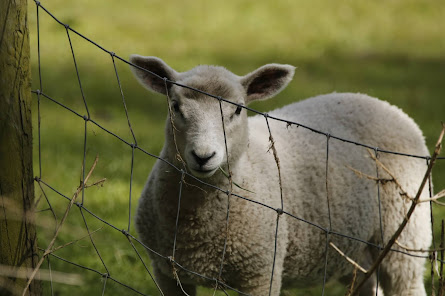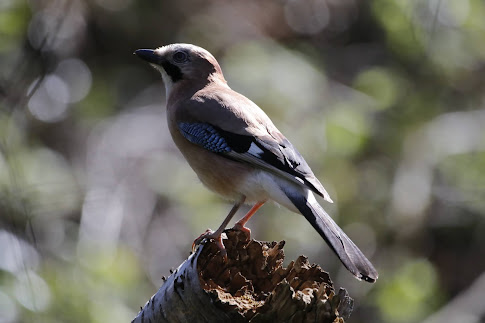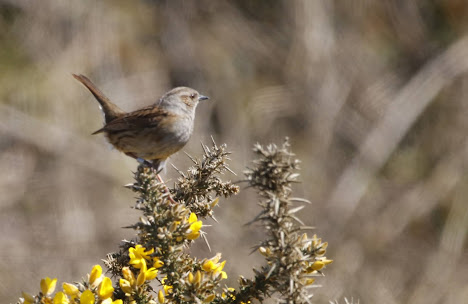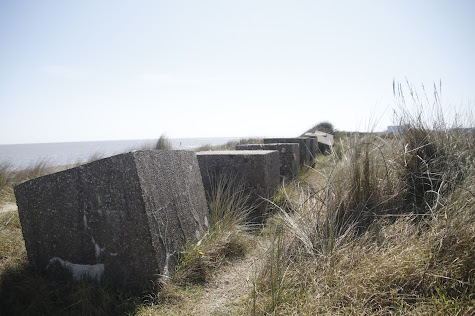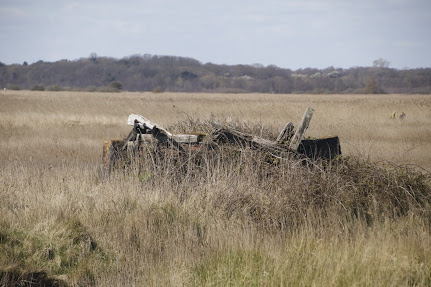Its not often we get such a dry, cold April. Another month like this that comes to mind was the Spring of '96 back in my young boy days, when a visit to Ouse Washes saw dust storms blowing in the Fens. As a result of this old, dry weather, this has been a very poor month as Aprils go, with Spring migration, usually a flood at this time, barley a drip. So it was that it was a very poor showing as I traversed the birding sites along the Gipping. The main interest, birdwise today were the young birds which the early nesters are starting to fledge, as there wasn't much migration to speak of.
Pipps Ford
The centrepoint of all birdwatching in the valley, is the Pipps Ford area which has the right combination of habitats to attract interesting birds. PippsFord is a combination of finished and active quarry, two further small lakes, rough grassland and woodland. At this time of year the area encourages waterbirds to nest, and there was a decent number here today.
First point of call is the former quarry, a small excavated area now flooded with water. A few waterfowl were about, some nesters, some with chicks. Most interesting of all was a GADWALL brood of 2 with a further pair, plus two broods of COOT with another nesting, and a GREYLAG brood of 5. LITTLE GREBES were also about, but I couldn't find any waders along the muddy edges, which can be a good place for them. A small passage of HOUSE MARTINS were hawking insects over the water a whizz of little birds with their distinctive white rumps, this is my first record for the year, it being a very slow migration year.
After that part of the quarry the path hits the river Gipping and winds its way up to Riverside Farm Pit. A small area of water, grazed by horses on its shores, a SWAN pair had built a gigantic nest amongst the bulrushes, and a pair of COOT and a male GADWALL were also present. To go further, the path winds back on itself and then up to Pippins Lake. Another small lake, fringed by trees there had been a drop off in wildfowl since my last visit with just two male GADWALL and a male TUFTED DUCK, with one COOT and SWAN apiece. The number of single male GADWALL around the area may mean there are females nesting somewhere out of sight, a few nest here every year. Next to Pippins Lake a GARDEN WARBELR was singing from a bush beneath the trees, my first of the Spring, similar in song to the much commoner BLACKCAP, which was also present in large numbers.
Just above Pippins Lake is the Active Quarry, a busy world of diggers, bulldozers and lorries, which made it a not particularly nice area to birdwatch, especially when a passing lorry kicks up a lot of sand in your face. Its a large, steep sided lake with islands and no vegetation, that changes form day to day, even more so over the years. A GREAT CRESTED GREBE was nesting on one of the islands and two male GADWALL were about. Unfortunately there were no waders about, usually this is a good area, and of further interest was a GREY WAGTAIL.
Barham Pits
South down the River Gipping, Barham Pits isn't the best place for looking for birds, being a couple of fishing lakes of not much interest. As I always say about this site, the current owners have really gutted the area, destroying most of the bird habitat over the recent years, which has made the place even worse. On Barham Pit A, a deep sided pit which has had its reedbed destroyed, a KINGFISHER was present, whilst a SEDGE WARBLER was singing from the last of the lakeside reeds.
On Barham Pit B, a large and wooded lake, GREAT CRESTED GREBES were having a boom time, with two young having hatched, another bird nesting. With a further pair hanging around, the pits along the river Gipping are a Suffolk stronghold for this species. COOTS had hatched three young and there were three GREYLAG GOSLINGS hanging around with the large number of geese.
Papermill Reedbeds
Another quiet area, the riverside meadows of Papermill is where I spent a quick visit, this site is further south along the river from the other areas. Cows have been reintroduced to the river side meadows including that annoying "bull in field" which farmers love putting along footpaths. Of note were two singing REED BUNTINGS singing from the reedbed area, although not many other birds, none of the reedbed warblers were back yet.
I met a guy testing the river here for water quality with this little gadget suspended in the water, connected to a computer device. He told me that although the river looks clear and healthy, has lots of vegetation and fish and other wildlife, the water is actually suffering from nitrate runoff from surrounding farms. This destroys the life of the river right down to the micro level.
A pretty poor showing from the river Gipping today. Being a local patch for me, there is an onus on me to bird the area no matter what. I would love to have Minsmere on my doorstep, but I have to live near civilisation, so have accept that the best place I can go to is the river Gipping. As I often say, birdwatching non nature reserves can be a lottery, as you don't know what the landowner has done to the site they are in charge of. Birds are fairly resilient and can be found in most places, but even the most hardy of wildlife is struggling in this industrialised countryside.


